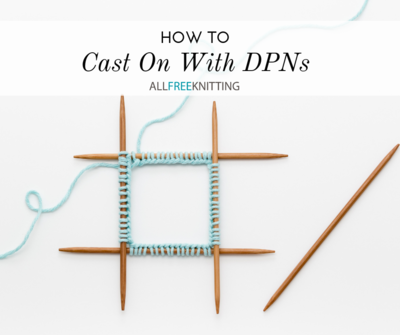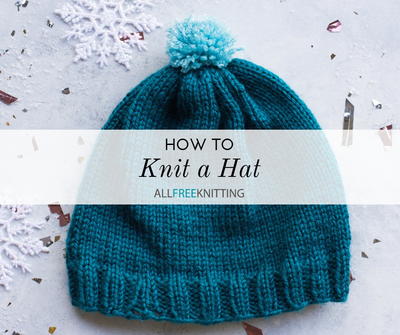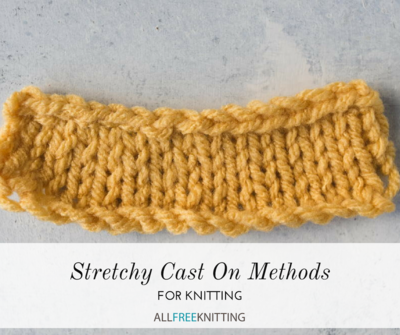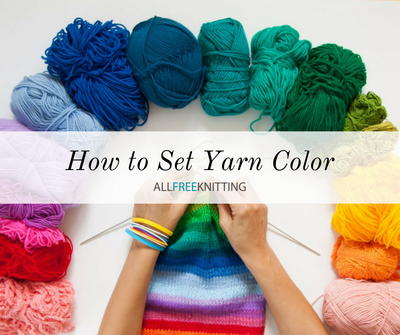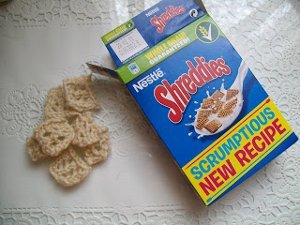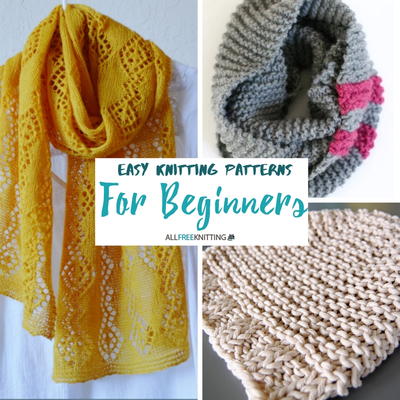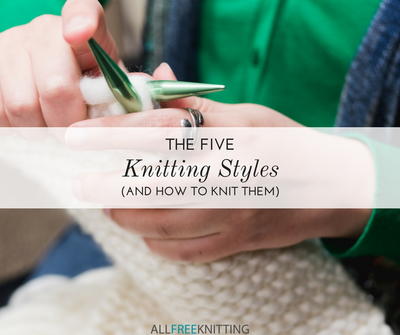How to Cast On With DPNs
There are a few methods to learn how to cast on double pointed needles in the round, so find your favorite!
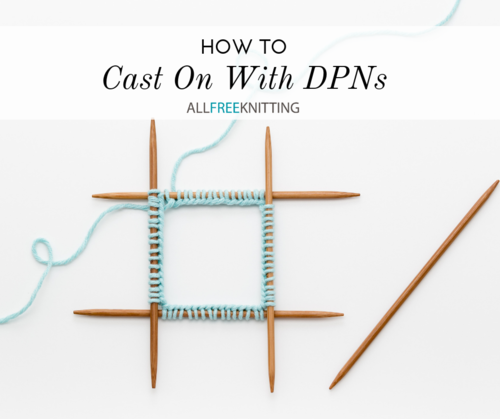
Even if the concept of knitting in the round isn't lost on you, you might find yourself a little perplexed by how to get started. Learning how to join in the round is a different sort of skill that you never needed on your straight needles, and, like most things in knitting, it's further complicated by the fact that there's no one right way to accomplish it. In order to learn how to cast on with DPNs, it's a good idea to set aside some time to practice the various methods and decide which way is right for you.
Materials
-1 set of double-pointed needles in the size appropriate for your yarn (4 or 5 needles)
-Yarn in a weight appropriate for your size of double-pointed needles
-Stitch marker (optional)
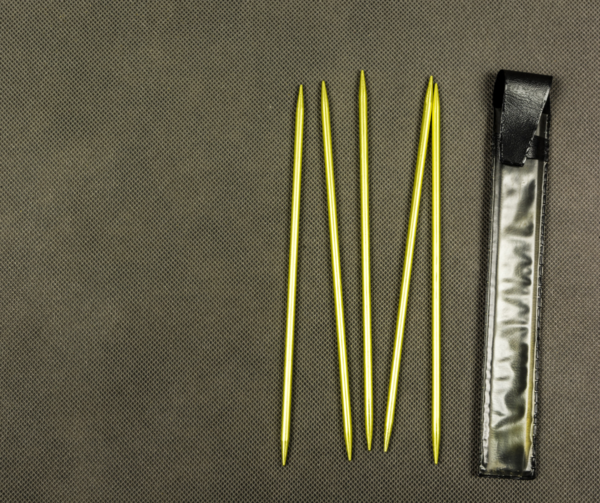
Starting Off
To begin all three of these methods, you must take the number of stitches your pattern tells you to cast on and divide that by either 3 or 4. Whichever number you choose to divide by is how many needles you will be working on. Typically, knitters start by knitting on three needles, both because many sets of DPNs only come with 4 needles total (and you'll need one to knit with!) and because there are fewer needles to keep track of.
Let's say we're instructed to cast on 30 stitches. That means you're going to want 10 stitches on each of your 3 needles. That seems easy enough, right? Well, what if you were instructed to cast on 32 stitches? Don't worry about it too much, and try to keep the number of stitches on each needle as even as possible. In the case of 32 stitches, you could plan to have 11 stitches on two of your needles, and 10 on the third. Some patterns will even instruct you specifically on how many stitches each needle should have, taking away the guesswork for you. If the pattern doesn't specify, you should try to keep them as evenly divided as you can.
For the sake of this example, we'll pretend we have 30 stitches total to cast on, resulting in 10 stitches per needle.
Method 1: Casting On, Then Dispersing
The first method involves initially only using one of your DPNs. This method is easier if you don't like to have to worry about juggling too much at once or potentially dropping stitches while you cast on, but it's more difficult if you have a higher cast on number than one of your DPNs can handle. If this is the case, you may want to consider using a single straight needle for the first portion of this method.
First, take your first DPN (or single straight needle), and make and place your slip knot on the needle. Then, using the longtail cast on method, you'll cast on 30 stitches, like normal, on this one needle. Bear in mind that your slip knot still counts as your first stitch. Next, take the first of your three DPNs and slip either the first or last stitch of your cast on (doesn't matter which!) purlwise onto the DPN. Do the same with the next stitch until you have 10 stitches on your first needle.
You'll continue to slip the stitches onto your DPNs, but for the 11th-20th stitches, you'll switch to your second DPN and slip the rest on. Then, finally, you'll slip your remaining 10 stitches onto your third needle. What you did here was cast on separately and then transferred your cast on to your DPNs. We're not done yet, though; we still have to join our cast on in the round. Let's first try the second method before settling on one.
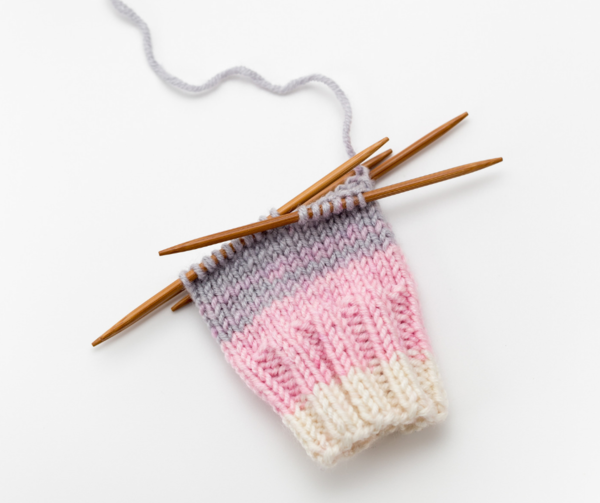
Method 2: Casting On Each Individual Needle
This method is the multitasker's dream. Let's assume you're casting on using the standard longtail cast on method. Start with your slip knot on DPN needle 1. Like in any other cast on, this counts as your first stitch. Cast on 9 more stitches as normal.
Your next 10 stitches will want to be cast on with your second needle. Prepare your yarn to cast on another stitch, but instead of catching the yarn on the needle you were using before, take one of your empty needles and use that to cast on your next stitch. You'll now have 10 stitches on your first needle and 1 on your second, but it should look a little off; the yarn connecting the tenth and eleventh cast on stitches should be pretty loose. Just take your long tail and working yarn and pull on them gently to tighten them up. If you don't tighten here, you'll have a rather large gap in your knitting.
Like before, cast on 9 more stitches on this needle, and repeat the previous step to begin casting on your set of 10 on your last needle. You should have 10 stitches cast on each of your three needles, and it didn't require any steps after cast-on! It was just a little more difficult to juggle.
While our example discussed working on three DPNs, this method works easily as well on 4 DPNs; you just need to divide your initial cast on number by 4. However many you decide to knit on comes down to how many DPNs of the same size you have and what feels the most comfortable.
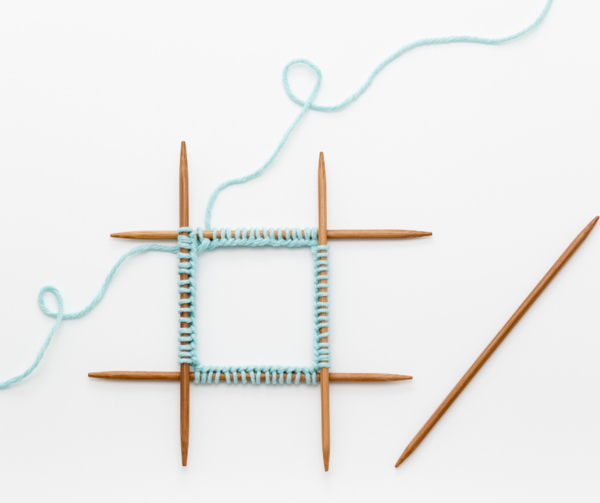
Joining In the Round
Now that you have 10 stitches on each of your 3 needles, it's time to join your knitting in the round. If you've knit on circular needles before, you may already have a preferred method of doing this. However you join your work in the round, be sure to carefully examine your stitches and make sure that they're all facing the same direction and they're not twisted before you join them up.
You can always just start knitting off of your first needle with your spare fourth needle, but this leaves a bit of a gap in your cast on row. I always recommend casting on an extra stitch to the first DPN, slipping your slip knot onto your third needle purlwise, and pass the last stitch you casted on over your slipped stitch and drop it. Tighten your tail and working yarn by pulling, and you've joined in the round without a gap.
A stitch marker probably won't be needed when working on DPNs to denote the beginning of the round, because the beginning of the round will likely be the first stitch of your first needle (which you can identify by the yarn tail coming out of the cast on row), but you may choose to shuffle your knitting around from needle-to-needle as you work to avoid a gap of loose knitting between each needle. In this case, you'll want to keep a stitch marker around to place at the beginning of the round.
With either of those two methods, you have cast on to DPNs, joined in the round, and you're ready to begin working!
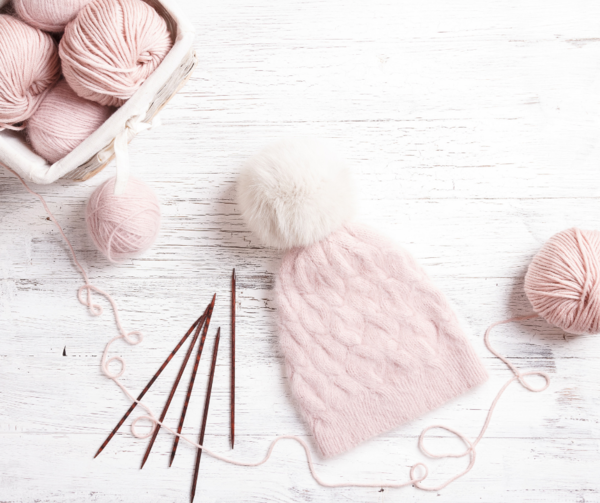
Do you have a special method for casting on with DPNs?

